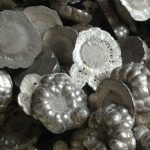Notice: Undefined index: sith_hide_share in /www/sites/alloy.wiki/index/wp-content/themes/likegoogle/single.php on line 32
Deprecated: get_settings is deprecated since version 2.1.0! Use get_option() instead. in /www/sites/alloy.wiki/index/wp-includes/functions.php on line 4862
As the annealing temperature increased from 650 ℃ to 800 ℃, the tensile strength and specified non-proportional extension strength of titanium target decreased gradually, and the elongation increased gradually. Compared with the hot-rolled state, when annealing at 650 ℃, the tensile strength and the specified non-proportional extension strength were reduced by about 72 MPa and 128 MPa respectively, and the elongation was increased by 15%. When the temperature continues to rise to 800 ℃, the tensile strength and the specified non-proportional extension strength are reduced by 113 MPa and 168 MPa respectively, and the elongation is increased by 34. 5%. After annealing at 650 ~ 800 ℃, the tensile strength of titanium plate can meet the requirements of mechanical properties at room temperature in the technical requirements.

Considering the target material's requirements on the hardness of titanium plate, when the annealing temperature was 650 ℃, vickers hardness value was about 104 MPa. Although it was 33% lower than the hot-rolled state, it still could not meet the requirement that vickers hardness in the target material was no more than 100 MPa. When annealed at 700 ~ 800 ℃, vickers hardness value decreased to less than 100 MPa.
Guest contributors are welcome at the Alloy Wiki.It is a weekly wiki and guide on alloy information and processing technology, while also about the vast array of opportunities that are present in manufacturing. Our team of writers consists of a Machining Material Supplier / Machinist / Tool and Die Maker, a Biomedical Engineer / Product Development Engineer, a Job Development Coordinator / Adjunct Professor, and a President and CEO of a manufacturing facility.
Link to this article:Effect of annealing temperature on microstructure and properties of titanium target
Reprint Statement: If there are no special instructions, all articles on this site are original. Please indicate the source for reprinting:Alloy Wiki,thanks!^^


